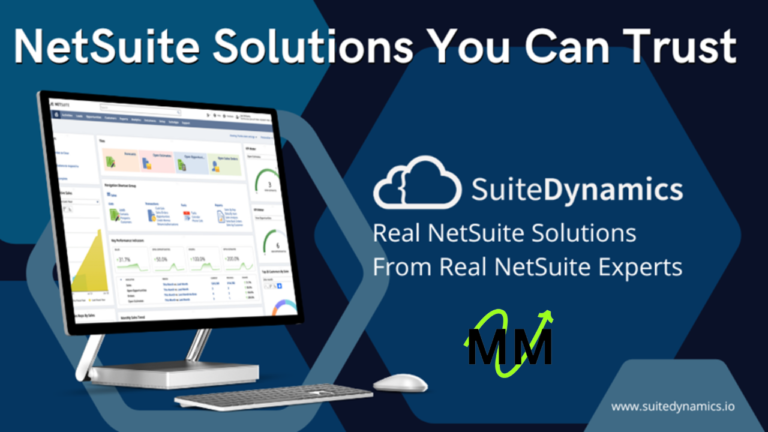How Geofencing Can Improve Local Marketing Campaigns

In digital marketing, businesses continuously search for ways to make their advertising efforts more targeted and efficient. One of the most innovative techniques to achieve this is geofencing, a location-based marketing strategy that enables businesses to send personalized advertisements to potential customers based on their geographic location. This technology, gaining traction in local marketing campaigns, allows advertisers to reach consumers at the right time and place, improving engagement and increasing conversions. In this article, we’ll explore how geofencing can enhance local marketing campaigns and offer valuable insights into its implementation.
What is Geofencing?
Geofencing refers to the creation of a virtual geographic boundary or “fence” around a specific location, which can trigger certain actions when a mobile device enters or exits that predefined area. It relies on GPS, RFID, Wi-Fi, or cellular data to monitor users’ real-time location. When a user crosses the boundary of a geofenced area, businesses can send targeted ads, offers, notifications, or other forms of communication to their mobile device.
Geofencing is often used with other digital marketing strategies, such as performance marketing, programmatic advertising, and connected TV advertising, to create more personalized, effective campaigns.
The Power of Geofencing in Local Marketing Campaigns
Local marketing is all about targeting consumers in a specific geographic area. Traditional methods such as flyers, posters, and billboards may not be as effective in today’s digital age, where consumers increasingly use smartphones and other connected devices. Geofencing leverages this behavior by enabling businesses to reach customers through mobile devices. Here’s how geofencing can improve local marketing campaigns:
Increased Precision in Targeting
Geofencing allows businesses to target customers based on location, providing precision that traditional advertising methods cannot match. By setting virtual boundaries around a business’s physical store or even within a specific neighborhood or city, advertisers can send promotions, discounts, or announcements directly to users within the fence.
This precise targeting ensures that only those near a business or relevant location receive the message, increasing the likelihood of conversion.
Real-Time Engagement and Immediate Action
One key advantage of geofencing is the ability to engage customers in real-time. For example, if a potential customer walks by your store, you can send them a notification with a special offer or incentive, enticing them to enter. This real-time engagement is especially effective when combined with demand-generation strategies, which aim to drive immediate action or foot traffic.
Personalization at Scale
Geofencing enables businesses to deliver hyper-targeted and personalized messages to individuals based on their location and behavior. Personalized messages resonate more with customers, who feel the content is tailored to their immediate needs. Whether it’s a coupon for a coffee shop when a customer enters a specific area or a special deal for a clothing store in the city’s heart, geofencing makes creating a personalized experience that encourages consumer action easy.
Improved Customer Insights and Analytics
Geofencing helps businesses engage with customers and provides valuable data on customer behavior. By analyzing how consumers interact with geofenced campaigns, companies can gain insights into their preferences, shopping habits, and location patterns. This data can be used to optimize future marketing campaigns and better allocate advertising resources.
For instance, by tracking how many users enter the geofenced area after receiving a push notification, marketers can measure the campaign’s effectiveness and refine their strategies accordingly. This data is vital for advertisers who want to improve TV or OTT advertising campaigns, as it provides additional layers of insight into consumer behavior that can be applied across multiple channels.
How Geofencing Enhances Specific Local Marketing Strategies
Incorporating geofencing into various local marketing strategies can significantly improve campaign outcomes. Below are a few examples of how geofencing can complement and enhance existing marketing methods:
Retail and In-Store Promotions
For retail businesses, geofencing is a game-changer. By creating a virtual fence around your store, you can send exclusive promotions to nearby customers, encouraging them to visit your physical location. Additionally, retailers can use geofencing to send loyalty rewards, such as discount coupons, when customers enter or exit the store. This approach increases the chances of driving foot traffic and improving sales.
Event Marketing
Geofencing is highly effective for local event marketing. Whether it’s a festival, concert, or conference, businesses can use geofencing to engage attendees with real-time offers, schedule reminders, or promotions related to the event. Organizers can directly engage with attendees by setting up geofences around the event venue or parking lots, keeping them informed and interested in related products or services.
Restaurants and Hospitality Industry
In the restaurant and hospitality industries, location-based marketing is an excellent way to increase customer engagement and conversion rates. You can target potential customers nearby and send them time-sensitive promotions or discounts by geofencing around your restaurant or hotel. For instance, a restaurant could send a “Happy Hour” discount notification when someone is within walking distance. This type of engagement is proven to drive foot traffic and increase sales.
Tourism and Local Attractions
Tourism businesses can use geofencing to enhance the visitor experience and boost engagement with local attractions. By geofencing around key landmarks or tourist spots, companies can provide visitors with relevant information, such as restaurant recommendations, ticket discounts, or notifications about upcoming shows and events. Geofencing also allows local tourism companies to track where visitors spend the most time, which can inform future marketing efforts.
Best Practices for Implementing Geofencing in Local Campaigns
To maximize the effectiveness of geofencing in local marketing campaigns, businesses should follow a set of best practices:
Choose the Right Geofencing Radius
The size of your geofence is crucial to the success of your campaign. A small radius will limit the number of people who receive your message. At the same time, a large radius could lead to irrelevant notifications being sent to people who are too far away. Experiment with different radii to find the best one for your business and location.
Timing is Key
Timing plays a significant role in the effectiveness of geofencing campaigns. You want to send your message when a potential customer is most likely to act. For example, sending a discount offer in the late morning or early afternoon when people are more likely to be out shopping might be more effective than sending a notification in the evening.
Ensure Relevance and Value
The messages you send to consumers should always be relevant and valuable. Avoid sending generic promotions that can come across as spam. Instead, tailor your messages to the user’s behavior, preferences, and proximity to the location. Personalization can make all the difference in a campaign’s success.
Monitor and Optimize Campaigns
As with any marketing strategy, tracking the performance of your geofencing campaigns is essential. Monitor metrics such as open rates, foot traffic, conversions, and customer feedback to determine the success of your campaign. Use this data to optimize future campaigns and improve targeting accuracy.
Combining Geofencing with Connected TV and OTT Advertising
Geofencing can also work harmoniously with connected TV (CTV) and OTT advertising to deliver even more personalized and targeted campaigns. For example, a consumer who receives a geofenced offer on their smartphone while walking by a store might later see an ad for the same store on their connected TV. This seamless integration between mobile, OTT, and physical location helps build a comprehensive, multi-channel marketing strategy that increases brand visibility and drives conversions.
Read More
Conclusion
Geofencing offers a powerful and efficient way for businesses to enhance their local marketing campaigns. By leveraging the precise targeting, real-time engagement, and data-driven insights geofencing advertising provides, advertisers can drive customer action, improve foot traffic, and increase conversions. What is geofencing advertising? It’s a location-based service that uses GPS or RFID technology to trigger marketing messages to consumers when they enter a defined geographic area. Geofencing can elevate a campaign’s success and deliver measurable results as part of a broader digital marketing strategy, including programmatic advertising and performance marketing. When implemented correctly, geofencing is invaluable for any advertiser looking to boost local engagement and brand loyalty.






